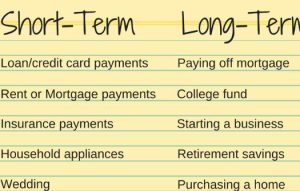How Do Long Term Goals and Short Term Goals Interact?
In the strategy of personal and professional development, understanding the dynamic interaction between long term goals and short term goals is essential. This interaction facilitates not only the achievement of immediate tasks but also the realization of broader, more significant aspirations. This article explores how these two types of goals complement and propel each other toward success, supported by data and practical examples.

Foundation of Goal Interaction
Long Term Goals: Visionary Framework Long term goals provide the overarching vision and ultimate targets for personal or organizational growth. These goals are ambitious, setting a path for where you or your organization want to be in the future, typically spanning five years or more.
Short Term Goals: Steps Toward Realization Short term goals act as the actionable steps taken to reach these broader objectives. Usually set for periods from a few weeks up to a year, these goals are more immediate and measurable, designed to steadily achieve the larger ambitions laid out by long term goals.
The Symbiotic Relationship
**1. Guidance and Direction
- Long Term Impact: Long term goals offer a clear direction which guides the setting of short term goals.
- Short Term Contribution: Achieving short term goals ensures that you are consistently making progress toward the overarching long term goals.
**2. Motivation and Momentum
- Data Insight: Studies suggest that achieving short term goals boosts motivation by providing tangible evidence of progress, which is crucial for long term projects. A survey from the University of Pennsylvania found that individuals who see quick results are 75% more likely to achieve their long term goals.
- Application: Short term successes keep the momentum alive, making the long term journey feel more feasible and less daunting.
Examples of Goal Interaction
Professional Development
- Long Term Goal: Become a department manager within five years.
- Short Term Goals: Complete leadership training next quarter, mentor with a current manager, lead a project team successfully in the upcoming year.
Financial Security
- Long Term Goal: Retire with financial security by age 65.
- Short Term Goals: Increase 401(k) contributions by 2% each year, diversify investment portfolio this year, review and adjust expenses annually.
Health and Wellness
- Long Term Goal: Maintain a healthy weight and robust physical health into older age.
- Short Term Goals: Join a gym and start a regular workout routine this month, schedule and complete a health screening every year, adopt a healthier diet plan starting next week.
Strategic Planning and Review
The interplay between short and long term goals necessitates ongoing review and strategic planning. This ensures that the short term achievements are effectively contributing to the long term visions and allows for adjustments in response to changes in circumstances or new opportunities.
Why Long Term Goals and Short Term Goals Are Crucial for Success
In conclusion, the relationship between long term goals and short term goals is fundamentally synergistic. Short term goals provide the necessary ladder steps to climb towards the loftier, long term goals. This interaction not only ensures sustained progress but also keeps individuals and organizations aligned with their ultimate objectives. By strategically setting and achieving short term goals, you can ensure that the path to long term success is well paved and attainable, leading to fulfillment and achievement in all aspects of life.